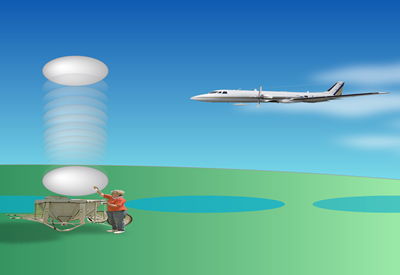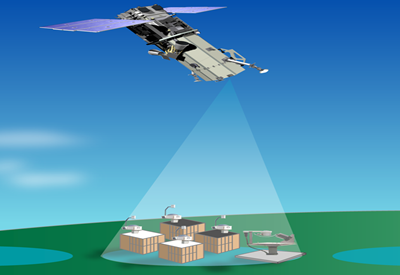Global Cooling in Action
Global Cooling in Action
Our Global Cooling in Action project, sponsored by the U.S. Department of Energy's Office of Energy Efficiency and Renewable Energy (EERE) and Office of Science, seeks to experimentally verify the radiative benefits of reflective cool roofs.


About
Cool roofs can help to delay climate change by keeping the atmosphere cooler. Akbari et al. (2009) estimate the benefits from increased reflectance of solar radiation by all urban surfaces worldwide would amount to approximately 44 gigatonnes of CO2 offset (for the lifetime of roofs). Until now, however, such projections have not been tested in an experimental setting.
Our Global Cooling in Action project, sponsored by the U.S. Department of Energy's Office of Energy Efficiency and Renewable Energy (EERE) and Office of Science, seeks to experimentally verify the radiative benefits of reflective cool roofs.
Objectives
Our controlled study at two sites in India will:
- experimentally verify the radiative benefit of cool roof treatment of buildings under varying atmospheric conditions using rooftop and satellite retrieved data
- use the field study data to verify the performance of a regional climate model that includes an urban canopy
- evaluate heat flux and temperature changes in rooms below the treated and untreated roofs
We will be modeling simulations to capture the resulting impacts from different types of rooftops. From these simulations, we aim to inform future policy by:
- quantifying benefits for a range of representative climatologies
- informing future studies that might attempt to quantify the urban heat island effects in U.S. cities
- providing essential information for analysis of future building code policies
- helping develop urban landscape and community policies
Contact
Marc Fischer
(510) 486-5539
Related Publications
2012
Levinson, Ronnen M. "The Case for Cool Roofs." 2012.
![]() PDF (205.7 KB)
PDF (205.7 KB)
Salamanca, Francisco, Shaheen R Tonse, Surabi Menon, Vishal Garg, Krishna P Singh, Manish Naja, and Marc L Fischer. "Top-of-atmosphere radiative cooling with white roofs: experimental verification and model-based evaluation." Environmental Research Letters 7.4 (2012).
2011
Menon, Surabi, and Ronnen M Levinson. "Cool roofs and global cooling: a response to Jacobson & Ten Hoeve (2011)." 2011.
![]() PDF (164.37 KB)
PDF (164.37 KB)
2010
Menon, Surabi, Hashem Akbari, Sarith Mahanama, Igor Sednev, and Ronnen M Levinson. "Radiative forcing and temperature response to changes in urban albedos and associated CO2 offsets." Environmental Research Letters 5.1 (2010).
2009
Akbari, Hashem, Surabi Menon, and Arthur H Rosenfeld. "Global cooling: increasing world-wide urban albedos to offset CO2." Climatic Change 94.3-4 (2009) 275-286.
Akbari, Hashem. "Hashem Akbari speaks to BBC Radio World Service about global cooling." BBC. 2009. Television.
2008
Akbari, Hashem, Surabi Menon, and Arthur H Rosenfeld. Equivalent CO2 avoided by reflective roofs and pavements in California. 2008.
![]() PDF (137.87 KB)
PDF (137.87 KB)
2007
Akbari, Hashem, Surabi Menon, and Arthur H Rosenfeld. "Global cooling: effect of urban albedo on global temperature." 2nd PALENC and 28th AIVC Conference. Crete, 2007. 1-5.
2006
Kaarsberg, Tina, and Hashem Akbari. "Cool Roofs Cool the Planet." Home Energy 2006: 38-41.
![]() PDF (268.96 KB)
PDF (268.96 KB)